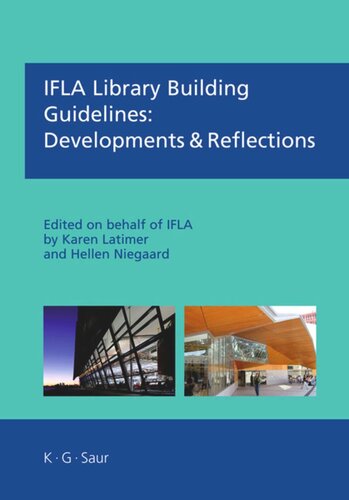

Most ebook files are in PDF format, so you can easily read them using various software such as Foxit Reader or directly on the Google Chrome browser.
Some ebook files are released by publishers in other formats such as .awz, .mobi, .epub, .fb2, etc. You may need to install specific software to read these formats on mobile/PC, such as Calibre.
Please read the tutorial at this link: https://ebookbell.com/faq
We offer FREE conversion to the popular formats you request; however, this may take some time. Therefore, right after payment, please email us, and we will try to provide the service as quickly as possible.
For some exceptional file formats or broken links (if any), please refrain from opening any disputes. Instead, email us first, and we will try to assist within a maximum of 6 hours.
EbookBell Team

5.0
88 reviewsThe information society and the information age are changing library services as well as library premises. This raises questions about what needs to be considered when planning and designing new library buildings in order to achieve attractive, efficient and future-oriented new library spaces.
This new publication provides information and guidelines for the building planning process, whether you are planning a new public or academic library building. It reflects on fundamental issues, on new development trends and on the planning process. The library building process is seen from both the library manager's perspective as well as that of the architect and designer. Issues covered include what to consider when investigating the need for space, library design from a marketing viewpoint, green management and sustainability relating to library buildings and a layman's guide to reading plans.
This publication and the IFLA guidelines provided are not seen as a traditional set of recommendations to be rigidly adhered to since this would be unrealistic in a fast-changing and global context. Rather, library managers and architects should read them in order to inform their thinking on key issues and establish a planning programme. They must then relate them to their own countries and circumstances by making the relevant local adjustments.